Autoimmune blistering dermatoses are autoimmunological diseases in which the body's own immune system recognizes the links between the skin layers as substances to be defended against. The immune system therefore uses antibodies to destroy parts of the skin and thus initiate blistering. The immune system of patients with autoimmune dermatoses is downregulated as far as possible by means of long-term immunosuppressive treatment.
What are autoimmune blistering dermatoses?

© 7activestudio - stock.adobe.com
The human immune system recognizes pathogens and other foreign substances that have penetrated the organism. Immunological cells then send antibodies to the affected area to ward off the dangerous substances. Different diseases can impair this body's own defense reaction.
Autoimmune diseases are immunological malfunctions. Cells of the immune system incorrectly recognize the body's own tissue as foreign and attack this tissue. In principle, all types of tissue can be affected by autoimmune diseases. For example, there are different subcategories of autoimmune diseases of the skin tissue.
One of them is that of autoimmune blistering skin diseases. The defense system of people with autoimmune blistering skin diseases directs antibodies against skin components. The upper layers of the skin separate from the underlying tissue in a sequence. Blistering begins. The pemphigoid and pemphigus diseases are subtypes of this type of disease. The two types have different pathophysiology.
causes
The etiology of autoimmune diseases is generally unclear. In the past, various influences, including viruses and environmental toxins, have been discussed as the primary causative factors for the immunological incorrect programming. The pathophysiology of autoimmune blistering dermatoses is relatively clear despite the unexplained primary cause.
In pemphigoid diseases, antibodies are directed against protein molecules that connect individual keratocyte layers with the basement membrane. This process loosens the basement membrane and promotes the formation of plump bubbles. Examples of such diseases are bullous pemphigoid, scarring mucosal pemphigoid, and pemphigoid gestationis.
In the case of pemphigus diseases, however, the antibodies attack desmosomes in the epidermis that connect keratocytes to one another. The formation of blisters is more subtle in these autoimmune dermatoses. In some cases the top layer of skin becomes puffy-like. Examples of known pemphigus diseases are pemphigus vulgaris and pemphigus foliaceus.
Symptoms, ailments and signs
Patients with autoimmune blistering dermatoses suffer from different symptoms. In individual cases, the symptoms mainly depend on the subtype. Bulging bladders indicate pemphigoid disease. More subtle or absent bubbles speak more for pamphigus diseases.
Many autoimmune dermatoses are accompanied by itching or a slight burning sensation. This symptom motivates the patient to scratch. However, the scratching process worsens or spreads the dermatoses. While the mucous membranes can also be affected by autoimmune blistering dermatoses in individual cases, this phenomenon is rather untypical, especially for pamphigus diseases.
Common to all blistering dermatoses with an autoimmune nature is the destruction of proteins, enzymes or other links within the skin layers. Which links the autoantibodies destroy and in which layers these substances are located depends on the specific disease.
Diagnosis and course
The diagnosis of an autoimmune blistering disease is made by a dermatologist. The first suspicion arises purely from a visual diagnosis. The suspicion is confirmed by immunofluorescence microscopy of skin particles or serum diagnostics.
It can be difficult to differentiate between individual autoimmune dermatoses with the naked eye. In the histopathological analysis, however, the individual forms can be distinguished from one another relatively well. The detection of certain antibodies in the skin is a crucial step in this. For patients with autoimmune blistering dermatoses, the prognosis depends on the disease.
Personal factors also play a decisive role. For autoimmune diseases in particular, an individual course always applies. In addition, the treatment options for affected patients have improved significantly in recent years.
Complications
Autoimmune blistering dermatoses describe certain dermatological diseases that affect the skin structure through antibodies in the body's own body. In the process, skin and tissue parts peel off in layers and blisters form. The symptom occurs predominantly on the extremities, upper body, face and mucous membranes.
For those affected, complications arise in everyday and professional life. Unpleasant pain symptoms and itching can become additional physical and psychological stress tests. In dermatology, autoimmune blistering dermatosis is divided into groups.
Pemphigoid diseases are directed against the connecting protein molecules with rather crusty skin peeling. The rare linear IgA dermatosis in children and adults shows vasodilatation of the skin structure and blistering. Epidermolysis bullosa acquisita, where antibodies destroy collagen 7 and infect the skin with lesions and blisters, is also rare.
Duhring's disease reacts with flaking, persistent itching and blistering. Consult a doctor immediately if you suspect autoimmune blistering dermatosis. The drug therapy is case-oriented and requires the immune system to be weakened in order to contain the symptom.
This can lead to further complications, depending on the patient's constitution. In addition to corticosteroids, immunosuppressants are also served that are not always tolerated. In an emergency, blood washing must be initiated for an antibody exchange.
When should you go to the doctor?
Autoimmune blistering dermatoses always require a visit to the doctor. In this group of blistering skin diseases, the immune system is directed against certain skin areas or layers of the skin. The affected skin forms blisters that eventually open.
Without a visit to the doctor, neither the cause of the blistering can be clarified, nor can professional treatment take place. This group of blistering skin diseases is classified as autoimmune diseases. This excludes successful self-treatment or recognition of the trigger by the patient. Those affected depend on a knowledgeable doctor to put an end to their suffering from open bladders.
In many cases, a competent doctor is only available to those affected after a long odyssey through various dermatological practices. The reason: autoimmune bullous diseases are among the seldom occurring skin diseases. Such patients often only find help in the "Center for Rare Diseases" of the UKSH or similar clinical facilities.
Once the autoimmune blistering dermatoses have been correctly assigned, targeted treatment and immunosuppression can usually achieve long-term improvement. Without a histopathological or serological diagnosis, the affected people cannot be helped. All attempts by those affected to cope without the help of a doctor fail.
Doctors & therapists in your area
Treatment & Therapy
The primary triggers for autoimmune diseases have not been conclusively clarified despite intensive research. Thus, essentially only speculations can be made about the primary causes of the diseases; a causal therapy remains unexplained until the cause is cured. Modern treatments target the immune system, but do not reverse the programming errors.
Instead, modern treatment approaches basically dampen the immune system so that attacks on the body's own tissue will be more moderate in the future. Such treatment approaches are also known as immunosuppressive therapies. These are mostly conservative drug treatments.
Immunosuppressants downregulate the activity of the body's immune system. Well-known immunosuppressants are, for example, various cortisone preparations that have a systemic effect. For the long-term immunosuppressive treatment of autoimmune blistering dermatoses, agents such as dapsone, azathioprine and mycophenolate mofetil are also used.
The acute therapy is often carried out with cortisone same. Patients are instructed not to scratch the blisters. In addition, general skin care and hygiene are relevant in the context of autoimmune dermatoses. In particularly severe cases, the harmful antibodies can be removed from the blood using a special blood wash.
This blood washing makes use of centrifugal forces and selectively separates the patient's blood from the antibodies in order to return the blood to the affected person. In addition, various drugs can be used to inhibit the formation of new antibodies.
Since diet has been identified as a risk factor for some autoimmune diseases, diet should be adjusted if necessary. Avoiding stressful situations or using strategies to cope with stress can also have a positive effect on personal progress.
Outlook & forecast
The prognosis for autoimmune blistering diseases is unfavorable. Despite all efforts, scientists and researchers have so far not been able to find the cause of the disease. Targeted medical treatment is therefore not possible.
In practice, various therapeutic approaches are used to treat symptoms, but these do not lead to a cure for the disease. In most cases, long-term therapy takes place, as the symptoms return immediately after the medication has been discontinued, even months after the start of treatment.
Natural remedies or alternative healing methods have not been able to achieve sufficient results either. They can individually support the body and bring about relief from various sequelae, but not bring about a full recovery. They are helpful against itching or to reduce stress. The patient experiences an improvement in general wellbeing.
Since some research results suggest that a solution can be found in a healthy immune system, efforts are being made to stabilize and improve it. The patient can therefore experience relief from his symptoms with a healthy lifestyle and a balanced diet. Psychotherapeutic accompaniment of the patient helps to deal with the illness in everyday life. Although no cure is currently possible, the approaches can be used to find a way to achieve a good quality of life despite the blistering autoimmune dermatoses.
prevention
Preventive measures eliminate risk factors that could contribute to the development of a disease. In the case of autoimmune blistering dermatoses, dietary habits as well as psychological stress and viral diseases are considered to be risk factors. Although not all risk factors can inevitably be ruled out, there are hardly any other options available for prevention, especially in the context of autoimmune diseases.
Aftercare
In most cases, the measures or options for follow-up care for this disease are very limited.First and foremost, the person concerned is dependent on early detection of the disease so that further complications and further worsening of the symptoms can be avoided. The earlier a doctor is consulted, the better the further course of this disease is usually.
For this reason, early detection is in the foreground. With this disease, patients are dependent on taking medication. It is important to ensure that it is taken correctly and regularly, and that the correct dose is also observed. If you have any questions or are unclear, you should always contact a doctor first.
Not infrequently, however, those affected are also dependent on dialysis. They often need the help and support of friends and family, and psychological support is also very important. In most cases, this disease also reduces the life expectancy of those affected. In general, a healthy lifestyle with a healthy diet also has a positive effect on the further course of this disease.
You can do that yourself
From a conventional medical point of view, those affected can do little about the causes of the disease themselves, but they can avoid a number of mistakes that worsen the course of the disease. Under no circumstances should the patient scratch the vesicles. When scratching, there is on the one hand the risk of scars forming, and on the other hand germs can get into the scratch wound, which can lead to very unpleasant and sometimes dangerous secondary infections.
If the blisters itch heavily, antihistamines from pharmacies, which are offered as creams, tablets or drops, can help. People who cannot control the scratching pulse should wear cotton gloves so that they do not injure the diseased skin with their fingernails. The blisters themselves cannot usually be made invisible with make-up, but at least the redness can be concealed so that the skin changes become less noticeable.
In naturopathy, a connection between the autoimmune system and intestinal health is suspected. Those affected by autoimmune diseases are therefore often advised to have a colon cleanse followed by colon cleansing. The effectiveness of this treatment method has not been scientifically proven. However, patients repeatedly report successful healing. Since the treatment does not cause any serious side effects to fear, there is nothing against trying.
The intestinal rehabilitation is usually accompanied by a change in diet, which is also advocated by conventional medicine. In any case, those affected should keep a food diary and check whether there is a statistical connection between certain foods and acute attacks of the disease.

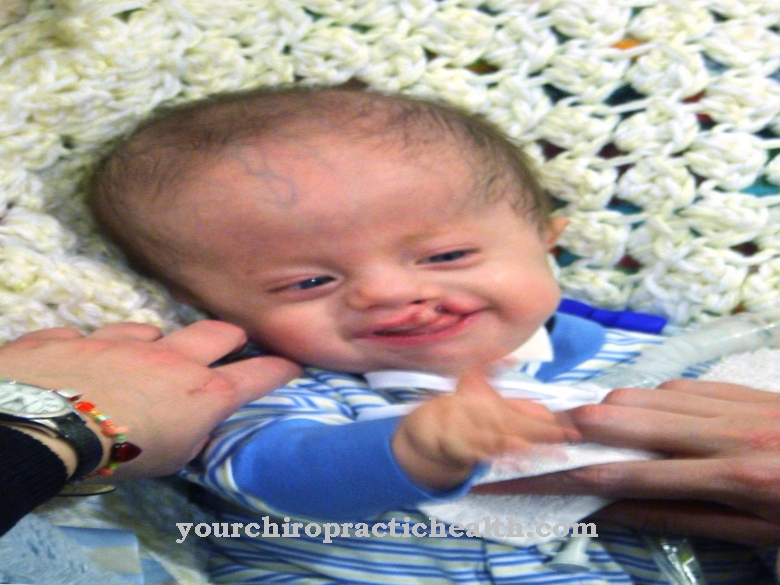
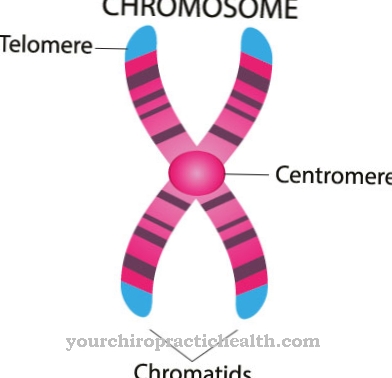
.jpg)
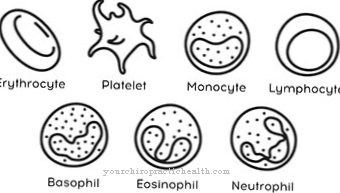
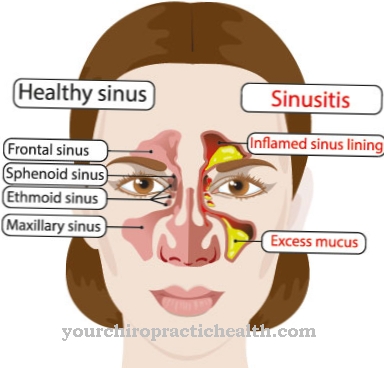
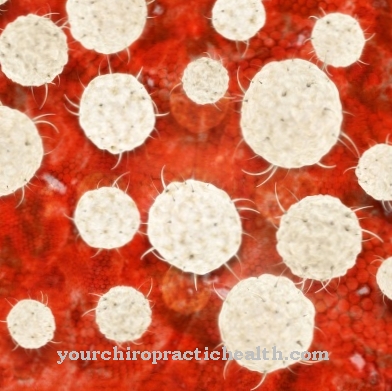

















.jpg)



